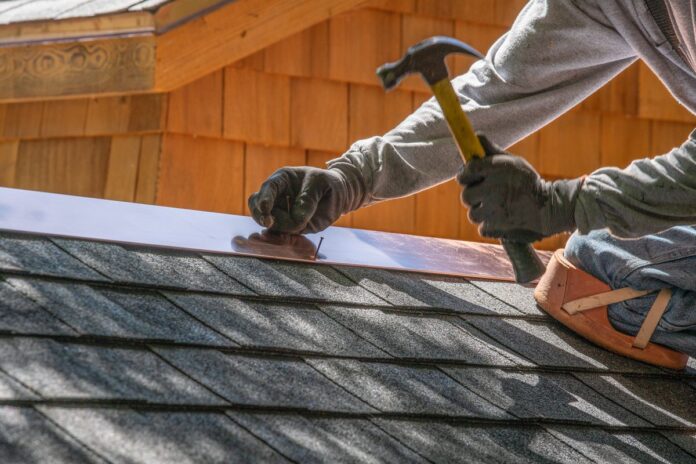Most homeowners have to contend with problems of dampness in the walls and leaking roofs after living in a house for a few years. The problem of leaking roofs is more acute in old houses which were constructed without waterproofing techniques. However, you cannot live in a house with a perpetually leaking roof, and this problem needs to be fixed as soon as possible.
Roofing Company Lincoln, Nebraska, is a professional company that offers free inspections, deposit-free work, and extended warranties when the problematic roof is fixed.
The Different Types Of Roof Leakages
1. A Crack In The Flashing
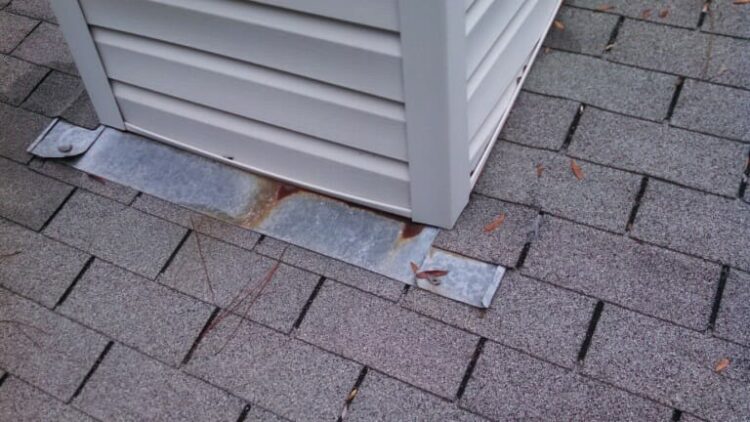
- Source:modernize.com
A crack in the flashing of your roof can be a cause of water leakage. But you first need to understand what flashing is and how it protects your house against leakage. When the roof is constructed by placing several tiles together, the joints of the tile are susceptible regions for the water to leak in.
A flashing comes to use to protect the joints between two or more pieces of tiles. Flashing is made of some impervious material like a mix of copper, aluminum, stainless steel, etc., and it prevents rainwater from seeping in through the joints between two or more tiles.
However, the joint between tiles is not the only place where flashing may be required; flashings are also required in places where a chimney is inserted or where vent pipes are inserted.
So if there is a crack in the flashing itself, that will lead to water seepage. The first step to repair a damaged flashing is to locate the exact area where the cracks have developed. This step often requires professional intervention.
The cracks can develop for primarily two reasons: firstly, the screws that hold the flashing might become loose, and they can come out. At times the metals like copper and aluminum that are used in the flashing can get eroded at the corners. If the problem lies with the screws, then you need to get new screws and insert them.
After inserting the screw, you must apply a layer of cement on top to secure the screw in its place. However, if the problem is the metal eroding at the sides, then you can use cement to strengthen the lining if the erosion is not significant.
2. Skylights That Are Not Installed Properly
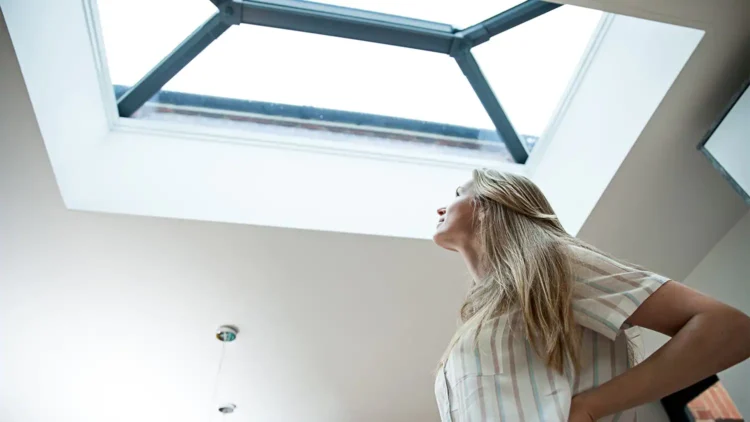
- Source:angi.com
Skylights are installed in a house to improve the penetration of natural light and also to improve the ventilation inside the house. However, if the skylight is not installed, it can lead to many problems.
If the main body of the skylight is made of a material that is of inferior quality or of a material that will break down when exposed to the elements for a while, then that is a problem. If the problem is with the material of the skylight, then you will have to replace it with a new one of superior quality.
A professional will locate the cementing or the shingles at the edge of the skylight and remove those first. Once all the shingle is removed, a claw-like instrument will be used to remove the main framework of the skylight. Once the faulty skylight has been removed, the professional will install the new one and fix it with cementing.
3. Damage Caused By The Accumulation Of Ice During The Winter Months

- Source:iko.com
During winter, ice can accumulate on rooftops, and this is a potential source of leakage. The ice is heavy, and this accumulated ice can put a lot of pressure on the attic. This pressure can damage the roof, and when the ice melts, the water can start leaking through the attic.
At times the ice may block the snow from flowing down an inclined roof, and thus it forms a dam-like structure which is all the more problematic.
If you are facing problems due to the accumulation of ice, then you must try to remove the build-up of snow on the roof. Alternatively, you can make a channel through a dam-like structure so that there is no heavy build-up of snow.
4. Excessive Moisture In The Attic
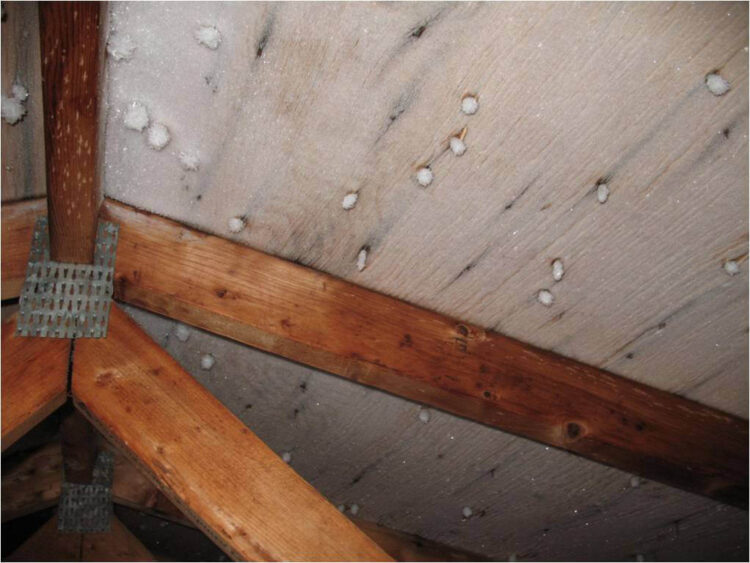
- Source:legault-dubois.ca
Rainwater accumulation is not the only cause of moisture accumulation in the attic. At times when the temperature difference between the ambient air and the rooftop is high, that can lead to condensation of the water vapor in the air. The condensation of water vapor makes the roof surface moist, and this can make the house walls damp and prone to leaking.
Such problems are common in houses where the roofing has become old, and most professionals suggest that the roofing needs a major upgrade to solve this problem.
5. Clogging In The Gutters Of The Attic
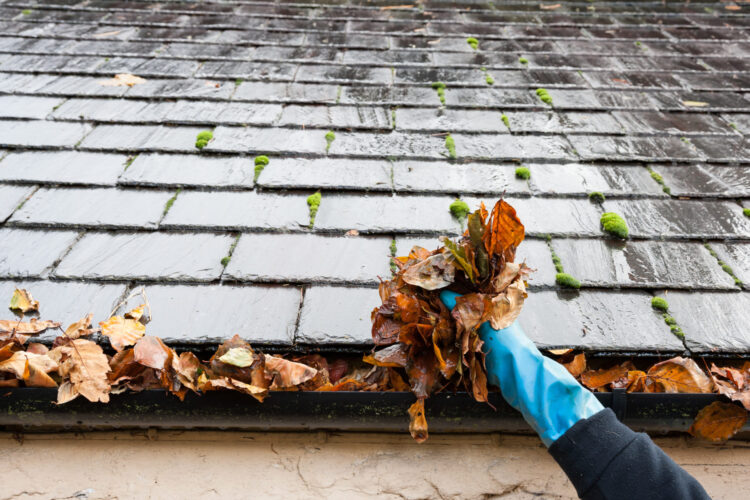
- Source:drymich.com
At times the gutters in the attic that help in its drainage can get blocked. The gutters mainly get blocked due to the accumulation of dried leaves in them. So the problem of blocked gutters is acute during autumn because most trees shed their leaves during this season.
Blocked gutters cause water from rain and snow to accumulate on the roof, and standing water damages the roofing and makes it weak. The easiest way to solve the problem of clogged drains is to clean the leaves from the mouth of the gutter. However, if the problem is acute, that is, if the gutters have structural damage, then the gutter needs to be fixed first.
Conclusion
This article lists some of the common causes of roof leakage, like the installation of a faulty skylight, accumulation of snow, blockage of gutters, etc. Apart from the reasons listed above, an attic can start leaking because of a cracked chimney or due to poor maintenance. When you notice damps in the wall or any other early signs of leakage, you must repair them immediately.
Delaying repair work can result in huge repair costs in the long term. So the sooner you consult a professional and get the problem fixed, the better it is for the life of your house and the comfort of your living.

